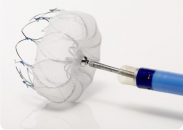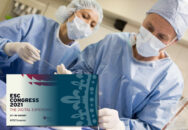Patients with atrial fibrillation undergoing percutaneous coronary intervention (PCI) will benefit from rivaroxaban monotherapy both in terms of safety and efficacy. The AFIRE study included 2215 patients with atrial fibrillation and stable coronary artery disease (CAD). A subgroups analysis recently published in JACC Intv evaluated patients undergoing coronary stenting. The study compared rivaroxaban + antiplatelet…
AMULET vs. WATCHMAN: Appendage Closure Devices, Head to Head
This research was designed to compare the double closure system of the AMULET device with the WATCHMAN (an evidence-backed proven device). In that context, to prevent stroke in patients with non-valvular atrial fibrillation, the Amplatzer AMULET device was non-inferior in both safety and efficacy compared with the WATCHMAN. Atrial appendage occlusion in itself improved with…
ESC 2021 | ENVISAGE-TAVI AF: Surprise with Endoxaban in TAVR and Atrial Fibrillation
The enthusiasm for direct oral anticoagulants after transcatheter aortic valve replacements (TAVR) is waning. At least, when it combines with atrial fibrillation. The ENVISAGE-TAVI AF has shown excessive bleeding with endoxaban vs. the classical vitamin K antagonists. Endoxaban resulted non-inferior to vitamin K antagonists in terms of net clinical adverse events, but major bleeding events…
Differences in American and European Atrial Fibrillation Guidelines
The recent publication of the European Society of Cardiology (ESC) and the American College of Cardiology (ACC) guidelines provided an important update on multiple aspects of the management of atrial fibrillation (AF). However, these guidelines differ in terms of management and recommendation levels. As it might be expected, most differences arose in intermediate cases—both guidelines…
ACC 2021 | LAAOS III: Appendage Closure During Central Vascular Surgery
According to the LAAOS III study, presented at the American College of Cardiology (ACC) 2021 Congress and simultaneously published in the New England Journal of Medicine (NEJM), patients with atrial fibrillation who undergo central vascular surgery for any other indication find benefit in appendage closure during said surgery. Using oral anticoagulation agents, patients undergoing appendage closure…
The Best Anticoagulant Agent for AF After TAVR
Direct anticoagulant agents were associated with lower long-term mortality in patients with atrial fibrillation (AF) discharged after transcatheter aortic valve replacement (TAVR), compared with classic vitamin K antagonists. The purpose of this paper published in JACC Interv was to compare long-term results between classic vitamin K antagonists and novel direct anticoagulant agents in patients with…
AHA 2020 | Post-TAVR Anticoagulation in Patients with Atrial Fibrillation
Direct anticoagulant agents were associated with lower long-term mortality in patients with atrial fibrillation discharged after successful transcatheter aortic valve replacement (TAVR) compared with classic vitamin K inhibitors. Optimal anticoagulation in patients with atrial fibrillation (AF) undergoing TAVR is unclear. We are actually just starting to know what the ideal antiplatelet therapy is for patients undergoing…
AHA 2020 | RIVER: Rivaroxaban as Alternative to Warfarin in Patients with Atrial Fibrillation and Bioprosthetic Mitral Valve
Rivaroxaban seems to be a reasonable alternative to warfarin in patients with atrial fibrillation and bioprosthetic mitral valve. These results arise from the RIVER Study presented at the American Heart Association (AHA) 2020 Congress and simultaneously published in the New England Journal of Medicine (NEJM). After 5 years of follow-up, rivaroxaban reached the non-inferiority criterion…
ESC 2020 | 2020 Atrial Fibrillation Guidelines: News on Diagnosis, Classification, and Care
New guidelines for the diagnosis and treatment of atrial fibrillation (AF) were released at the 2020 European Society of Cardiology (ESC) virtual congress. This document incorporates several findings from the latest clinical trials, but also represents a great shift in terms of how physicians from different specialties should classify and manage arrhythmia after confirming the…
ESC 2020 | Atrial Fibrillation and Rhythm Control: A Matter of Time?
Early rhythm control therapy in patients recently diagnosed with atrial fibrillation reduces the risk of cardiovascular events compared against the usual treatment of frequency control. These data come from the EAST-AFNET 4 trial recently presented at ESC 2020, simultaneously published in NEJM. These data suggest that we should offer patients early rhythm control therapy to…









